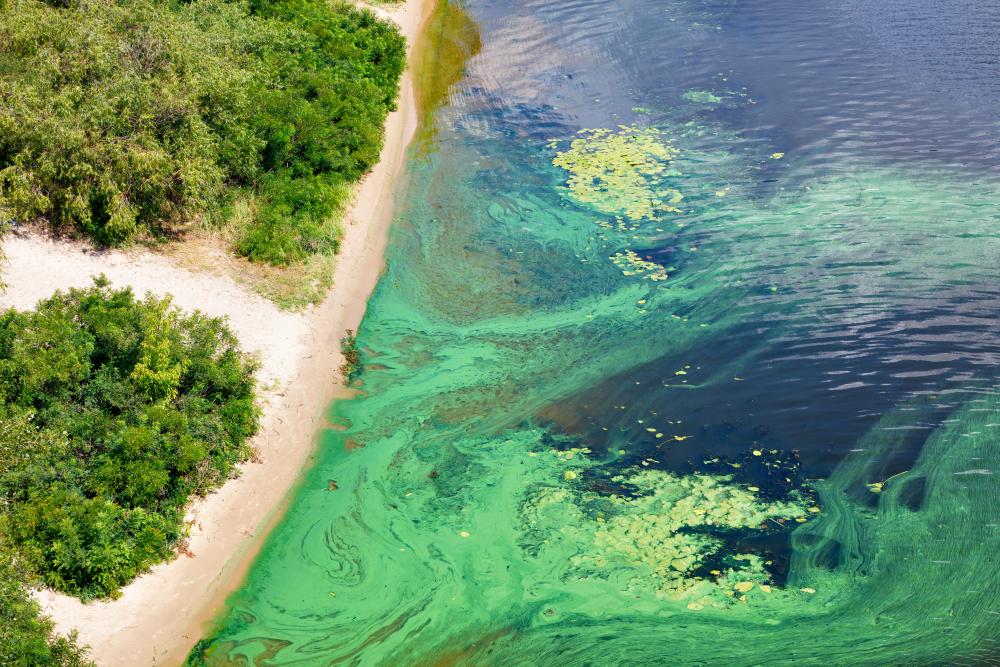
A single cell of Microcystis algae is only a few microns across, smaller than the width of your average strand of human hair. But don’t underestimate them. Every summer when water flows get low, temperatures rise, and nutrients concentrate in waterways, the conditions become perfect for Microcystis to take over. Feeding off nutrient discharges from agriculture and wastewater treatment plants, these algae dye waterways a sickly green and produce harmful cyanotoxins. Exposure in humans can result in symptoms that affect the skin, stomach, lungs, and nervous system while exposure to dogs can mean death. Every summer, multiple pets die in California’s waterways after swimming through Microcystis sludge. While people can avoid areas where these blooms occur, wildlife cannot, and chronic exposure to these toxins has seriously disrupted natural ecosystems.
Microcystis is one type of algae that contributes to harmful algal blooms, or HABs, across the state. Other varieties of algae produce their own type of toxins. Blooms of diatoms off the coast produce the neurotoxin domoic acid which disorients sea lions and causes them to wash onshore while red tides produce a suite of toxins that can accumulate in shellfish. Even non-toxic algae blooms can have serious detrimental effects, choking out waterways by overgrowth and using up all available oxygen. In 2022, a devastating algae bloom killed thousands of fish in the San Francisco Bay and was dubbed a “wildfire underwater.”
While these algae can occur naturally, excess nutrients are the drivers behind these blooms. Nutrient inputs from farming and wastewater discharges increase the intensity and frequency of HAB outbreaks across the state. Therefore, the best way to prevent HABs is to prevent dischargers from releasing excessive nutrient pollution into California’s waterways.
California has developed multiple tools to identify the thresholds at which nutrient loads threaten to create HABs across a variety of waterways, giving regulators the ability to identify with scientific accuracy safe levels of nutrient discharges. However, the State Water Board has dragged its feet on the issue, delaying the creation and implementation of this important policy despite abundant science and the data tools necessary to address HABs.
California Coastkeeper Alliance has identified HABs as a major threat to the swimmable, fishable, and drinkable waters of the state. We plan to use our policy and scientific expertise to compel the State Water Board to set nutrient pollution standards capable of stopping HABs before they begin. The science is complete, the tools are available, all that is left now is the policy.
Stay informed about our efforts to protect California’s waters by subscribing to California Coastkeeper Alliance’s monthly newsletter, becoming a lifetime member, or following us on social media: @CA_Waterkeepers.
Staff Attorney Cody Phillips advocates for statewide policies that protect water quality and access to clean water throughout California.



